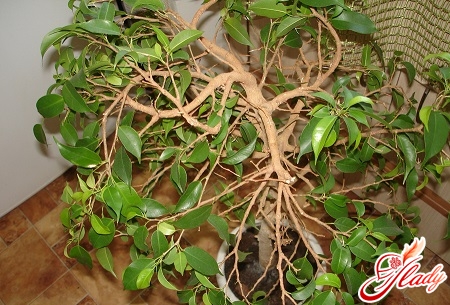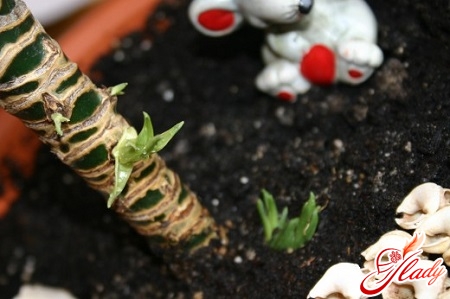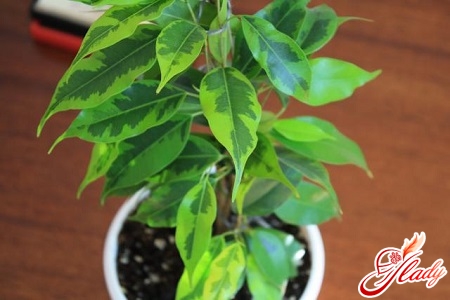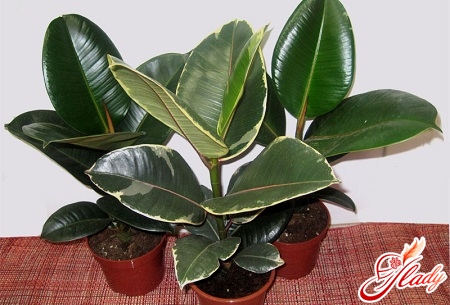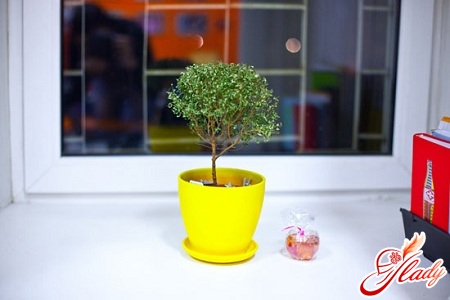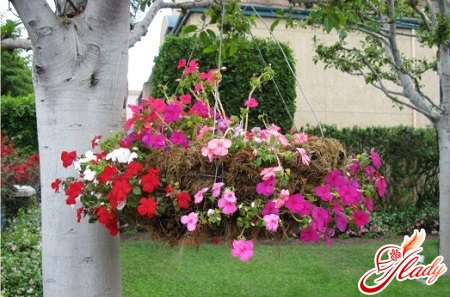
Today we invite you to dive intothe wonderful world of hanging plants. Beautiful flower arrangements hanging from balconies, colorful vines creeping up the facade of buildings, green gazebos - all this is decorative hanging plants. Hanging plant in German means "hanging flower vase". Most often, flowerpots, baskets, vases, etc. of various shapes are used as pots. Indoor plants and greenhouse flowers can be used to create beautiful compositions, and even some types of open-ground shrubs are suitable for this purpose. It has long been fashionable to use hanging plants for the garden, for vertical landscaping of suburban areas, and, of course, hanging plants look very beautiful in apartments. They differ from ordinary indoor flowers only in that they are placed on decorative lattice walls or high tables, but flowering compositions that literally hang like a waterfall from balconies look especially colorful.
Types of ampelian plants
Ampelous plants are divided into three main types:
- Ornamental-deciduous: asparagus, ivy, Tradescantia, saxifrage, fittonium and others.
- Krasivotsvetuschie: dyushenyaya, hoya fleshy, fuchsia, columbine and others.
- Ampellar succulents: apocractus oblate, zygocactus, cleansing and others.
These are far from all the flowers listed; there are many more varieties of ampelous plants.
Placing ampel colors
Ampelous plants such as chlorophytum, ivyand nephrolepis, take root well and look good in wicker flowerpots. As a rule, the most diverse material is used for weaving: rope, cord, vine. Ampelous plants on whatnot or round serving tables look very attractive. Wheeled stands are especially convenient because they can be easily moved from one place to another. In summer, it will be good to move the plants to the balcony or decorate the entrance to a country house in the country with them. However, when moving, you should take into account the level of illumination for each individual plant species. For example, asparagus and saxifrage love sunny places, and ivy, philodendron and ferns prefer to stay in the shade. In a personal plot, ampelous plants are often used as a hedge, doorways, porches, verandas are decorated with flowers. You can often find decorative flower arrangements in parks and gardens. Busy streets are greened with hanging baskets. A special place in the design is occupied by balconies and loggias. Most often, hanging baskets are used for this. With their help, you can easily decorate boring walls of houses or windows. There are various types of containers for hanging structures, including those made from scrap materials. The main requirement when choosing flowers for hanging baskets is the nature of their growth: they should hang beautifully from the basket, forming waterfalls of flowers. Many indoor plants are great for such purposes, for example, fuchsia, petunia, sweet peas, ivy, nasturtium, chlorophytum, tradescantia and others. The most unpretentious and "convenient" ampelous flower can be considered indoor begonia. Firstly, it grows quickly, secondly, it blooms profusely and, thirdly, it can patiently wait if you forget to water it on time. Its advantages also include painlessness of transplantation, which makes it even more popular. It should be taken into account that there is good air circulation in suspended structures, so the soil in such containers dries out quickly. Therefore, it is best to plant drought-resistant flowers in them (pelargonium ivy, petunia ampelous, verbena, scaevola pleasant, bidens ferulefolia). When creating multi-level compositions, use flowering plants of different shapes. You can mix climbing, carpet, bushy, upright and drooping plants, placing them next to each other. Carpet plants (purslane, gazania) can be planted along the edge of the container, and sweet peas, morning glory or thunbergia will perfectly form a drooping curtain. The top of the composition can be decorated with upright plants, for example, spicy greens. Bushy flowers such as fuchsia or begonia can grow both up and down. And nasturtium is ready to outgrow the middle tier of the composition. Pay attention to the level at which your "flower basket" will be located. If it is located below human height, bushy or upright ampelous plants will look advantageous. And in high-hanging flowerpots, cascading flowers of different shapes look colorful.
Care for ampel plants in the apartment
Ampelous plants are unpretentious and require little caredoes not require much effort and additional costs. Let's dwell on just a few essential points. Most types of ampels come from hot tropical countries, but the delicate flowers cannot stand direct sunlight. Therefore, place them near a window. Periodically turn the plant to the light source in different directions in order to form an even crown of leaves and flowers. If you place flowers on shelves or decorative stands, then choose lightweight plastic pots. A thick drainage layer is essential, because excessive watering and standing water are much more destructive to these plants than overdried soil. Drain the remaining water from watering from the tray. Please note that the higher the flowers are located to the ceiling, the less moisture is in the air at this level. Therefore, do not forget to spray the plants with a spray bottle, and during the heating season, use a humidifier or place containers of water directly next to the ampels. When growing plants in a flowerpot, it is necessary to hang it in such a way that you can freely check the condition of the soil and periodically turn the container with the flower from side to side. Important: when hanging, the plants should not touch other indoor flowers. Otherwise, there is a high probability of infection of plants with pests from each other. Plants with aerial roots are demanding of humidity, so spray them more often. Keep in mind that drops from plants that remain on them during spraying fall into the soil, and therefore it is necessary to reduce the amount of watering. Another good means of humidification is wet moss placed nearby. Despite the fact that humidity is vital for some types of flowers, it is also a favorable environment for fungi and bacteria. In order to reduce the risk of such diseases, add biological preparations such as Trichodermin or Fitosporin to the water for irrigation.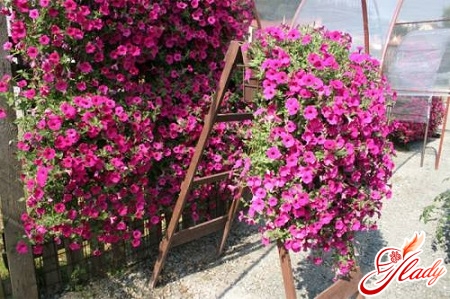
Care of ampels in the open air
The most popular among garden ampelsbought petunia, fuchsia, pelargonium, nasturtium, verbena - they all go well together. Ampelous plants on the street, in the garden, in the summer cottage - a great way for creative self-expression and the manifestation of your imagination. You can try all possible combinations, move hanging baskets from place to place, combine the incompatible, and still everything will look cozy and beautiful. Hanging structures and various baskets are also used to grow ampelous plants in the garden. Flowering compositions in such artistic containers as, for example, an old boot, a leaky wicker basket, a broken cart and others look especially magical. An ampelous plant in a pot is the most unpretentious for maintenance, it is enough to water it on time and periodically feed it. You will not need to weed, hill up your pet and fight weeds. Of course, the soil dries faster outdoors, so frequent watering is required. This is the main condition for keeping ampelous plants outdoors. The larger the pot, the more often you need to water the plant. It is best to water in the morning and evening. The presence of drainage and a drain hole in the pot is required. Clay shards, tree bark and traditional expanded clay can be used as drainage. The substrate for planting ampelous plants should consist of sand, peat and leaf humus. The addition of organic compost is allowed. To accumulate moisture in the soil, it would not be superfluous to add vermiculite or hydrogel granules. An important condition for the formation of a beautiful composition is regular fertilizing of plants with fertilizers. It is best to purchase a complex fertilizer for flowering plants in flowerpots. And, of course, do not forget to remove wilted flowers and dried shoots. Regularly check the plants for pests. Several times per season, spray with special insecticidal solutions and arrange a shower, pouring ordinary water over the plant. As you can see, hanging plants are a great alternative for decorating your home and garden. It is difficult to find identical flower arrangements, there are a great many options for creating hanging structures. You just need to show your imagination, be inspired by the desire and be inspired by the result. Once you create a colorful hanging plant, you will be captivated by its magnificence, solemnity and creative simplicity. We wish you creative success in decorating your interior with a flower "waterfall"!




